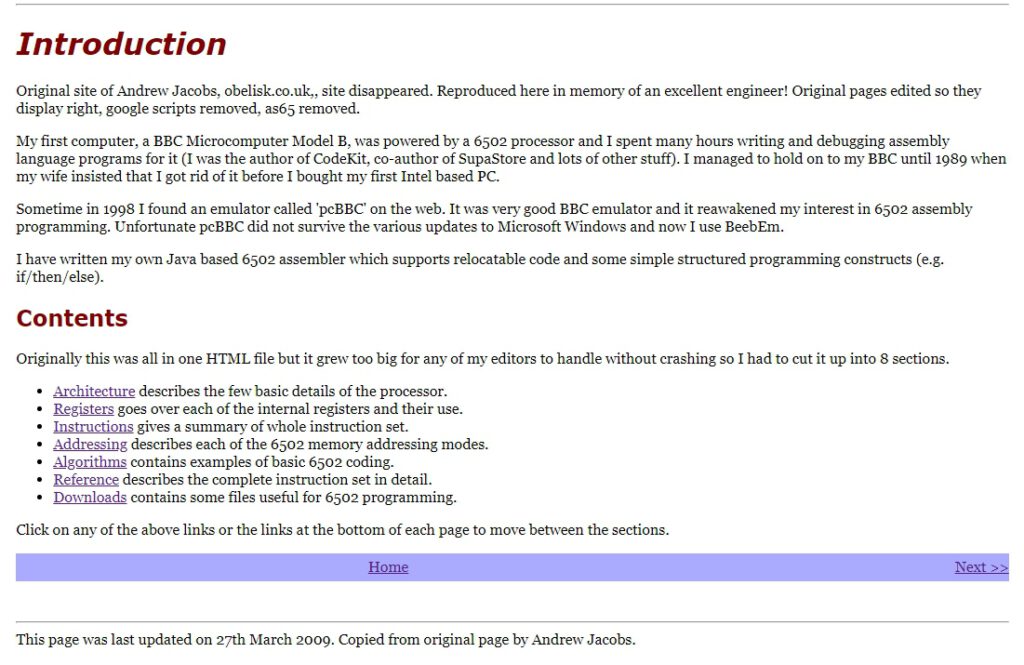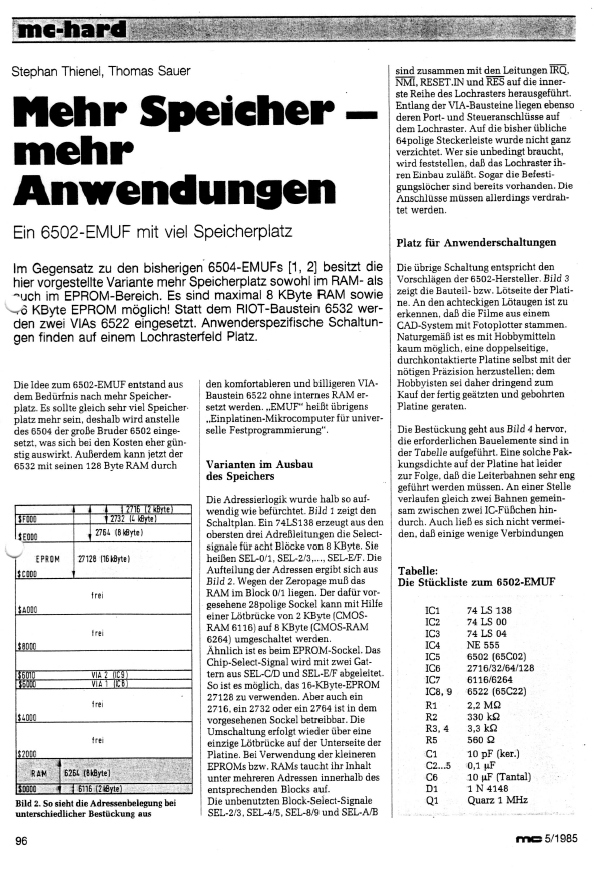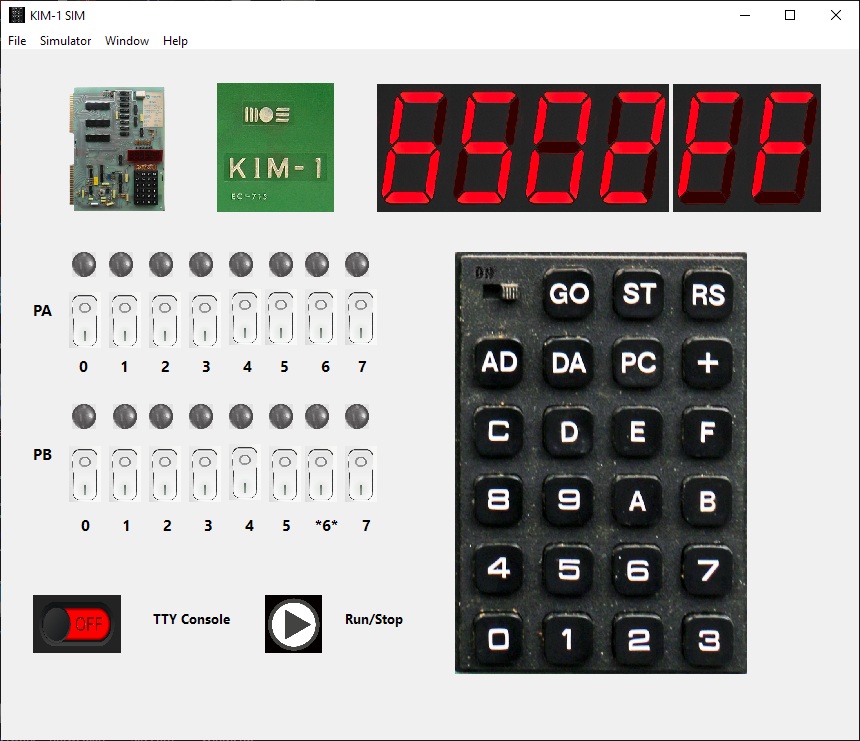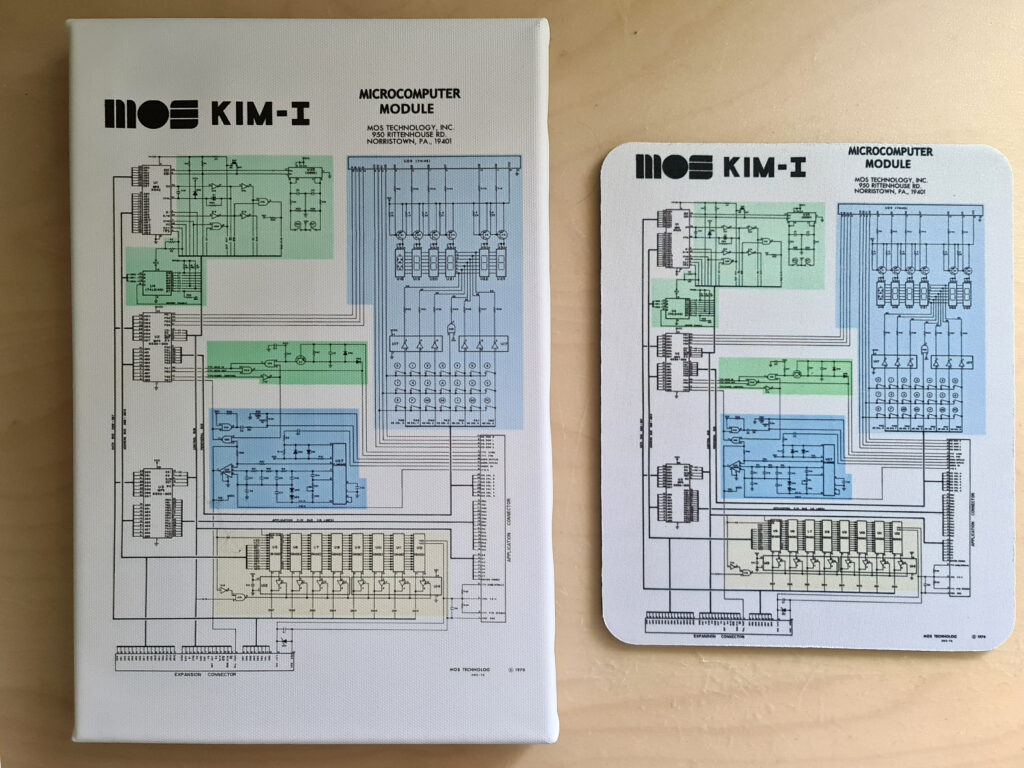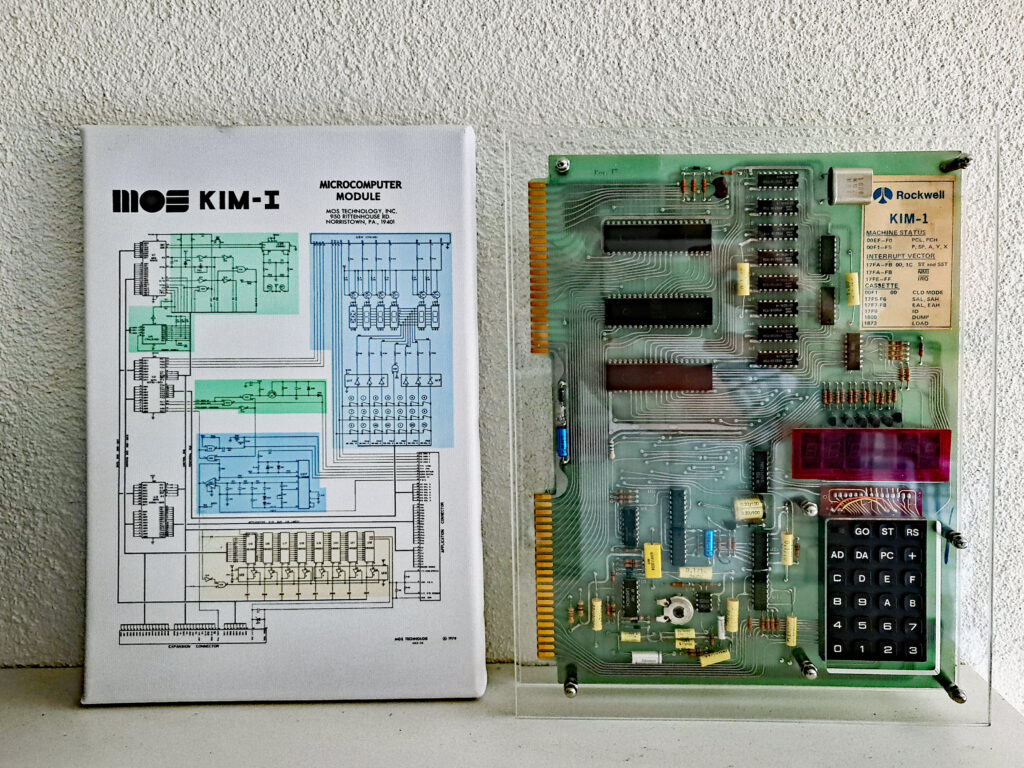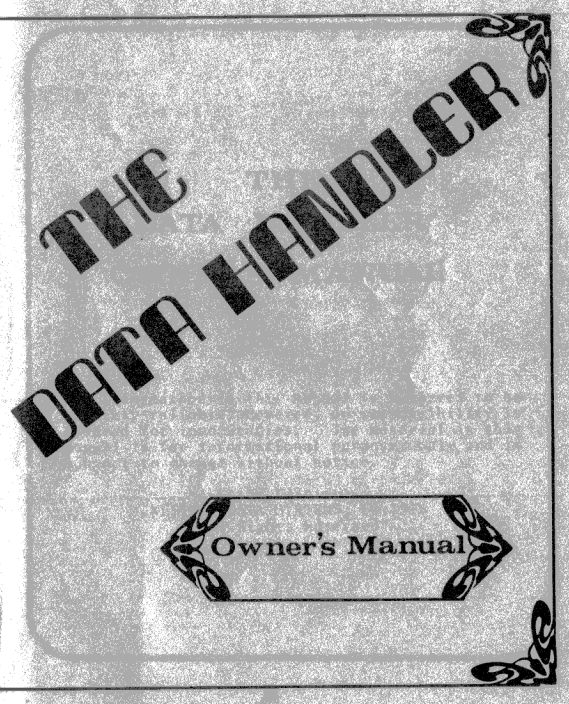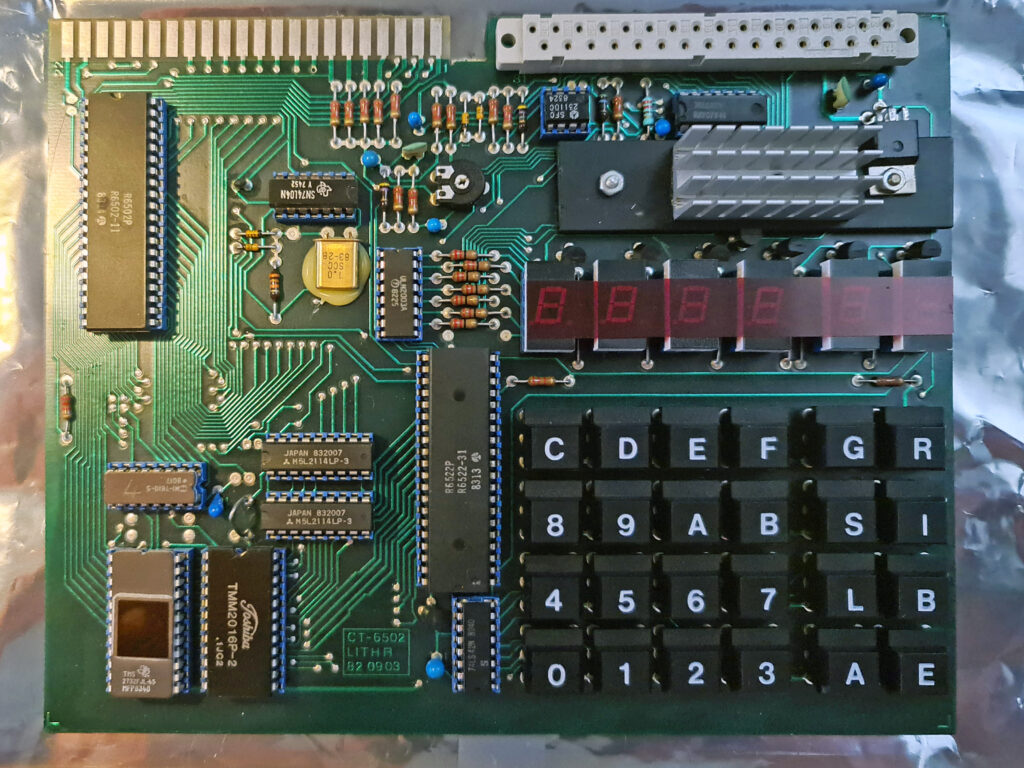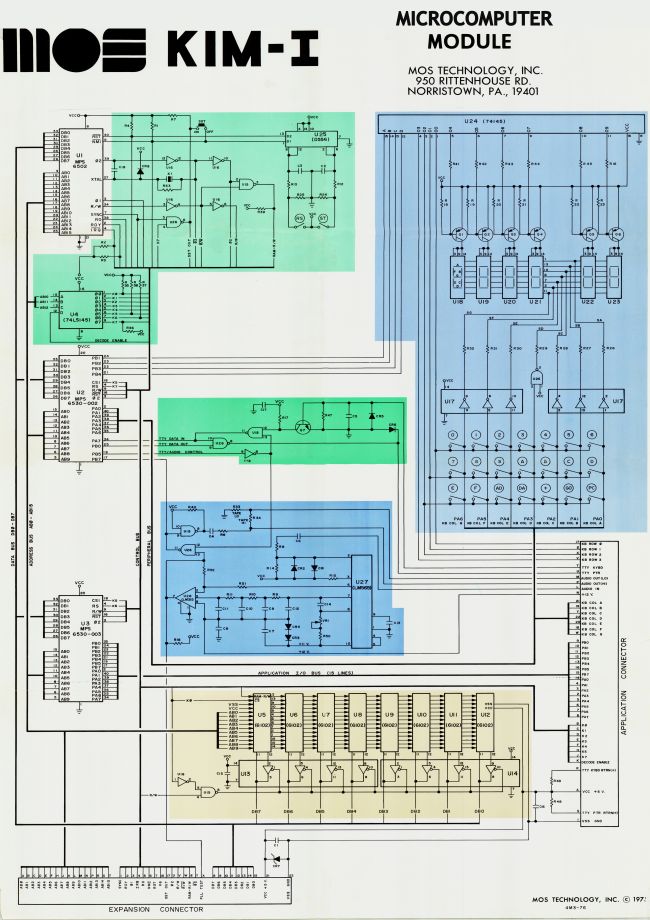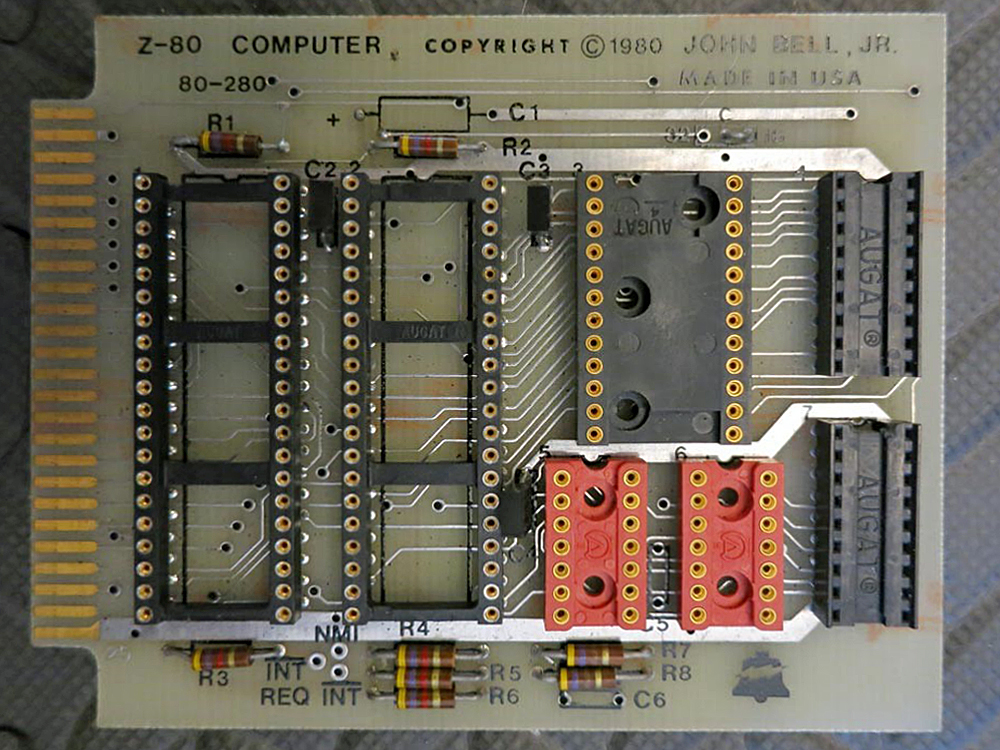 The late Andrew Jacobs set up a web site with relevant 6502 information. It is lost now.
The late Andrew Jacobs set up a web site with relevant 6502 information. It is lost now.
This site is reproduced here. Scripts and links are removed, it is clean code now.
Also have a look at his github archive, it is still up.
Enter the local hosted Andrew Jacobs 6502 site here!
